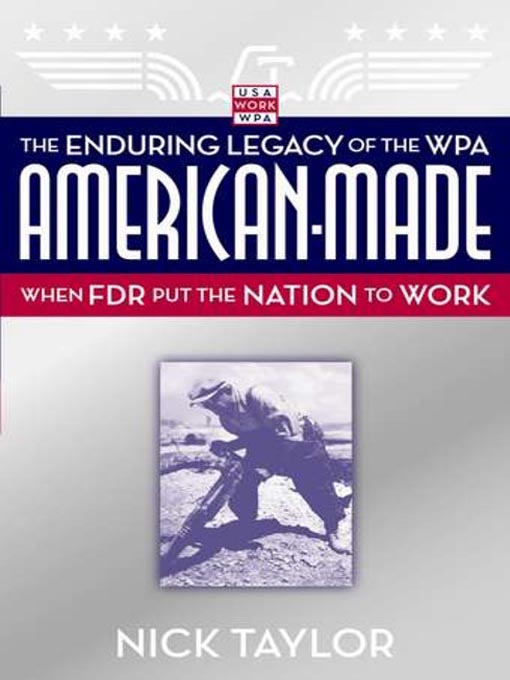
American-Made
The Enduring Legacy of the WPA: When FDR Put the Nation to Work
فرمت کتاب
audiobook
تاریخ انتشار
2008
نویسنده
James Bolesناشر
Tantor Media, Inc.شابک
9781400176519
کتاب های مرتبط
- اطلاعات
- نقد و بررسی
- دیدگاه کاربران
نقد و بررسی

Narrator James Boles enlivens the story of the WPA's creation in 1935, its emphasis on employing the most people, the brilliant stewardship of Harry Hopkins, the scope of its projects--from the construction of the Timberline Lodge on Mt. Hood to the serving of hot school lunches--its detractors, and its ultimate replacement by the war industry. This history lesson is so fascinating that all that's required in audio is a friendly pace and clear diction. Boles gives this and more. You hear echoes of FDR and Churchill in quotes and genuine sympathy in the descriptions of the hardships of unemployment without a safety net. This would be a good title for the road (maybe WPA-built?) as listening in sections doesn't hurt the experience. J.B.G. (c) AudioFile 2008, Portland, Maine

Starred review from December 10, 2007
Launched in 1935, at the bottom of the Great Depression, the Works Progress Administration (WPA) served as a linchpin of FDR’s “New Deal.” Through the WPA, Roosevelt put millions of unemployed Americans to work on public construction projects, from dams and courthouses to parks and roads. The WPA’s Federal Writers Project employed a host of artists and writers (among them Jackson Pollock, Saul Bellow, Ralph Ellison, Zora Neale Hurston and Studs Terkel); theater and musical artists also received funding. Taylor (Ordinary Miracles: Life in a Small Church
) vividly and painstakingly paints the full story of the WPA from its inception to its shutdown by Congress in 1943, at which point the war boom in manufacturing had made it unnecessary. In an eloquent and balanced appraisal, Taylor not only chronicles the WPA’s numerous triumphs (including New York’s LaGuardia Airport) but also its failures, most notably graft and other chicanery at the local level. Taylor details as well the dicey intramural politics in Congress over which states and districts would get the largest slice of the WPA pie. All told, Taylor’s volume makes for a splendid appreciation of the WPA with which to celebrate the upcoming 75th anniversary of the New Deal’s beginnings in 1933.

























دیدگاه کاربران